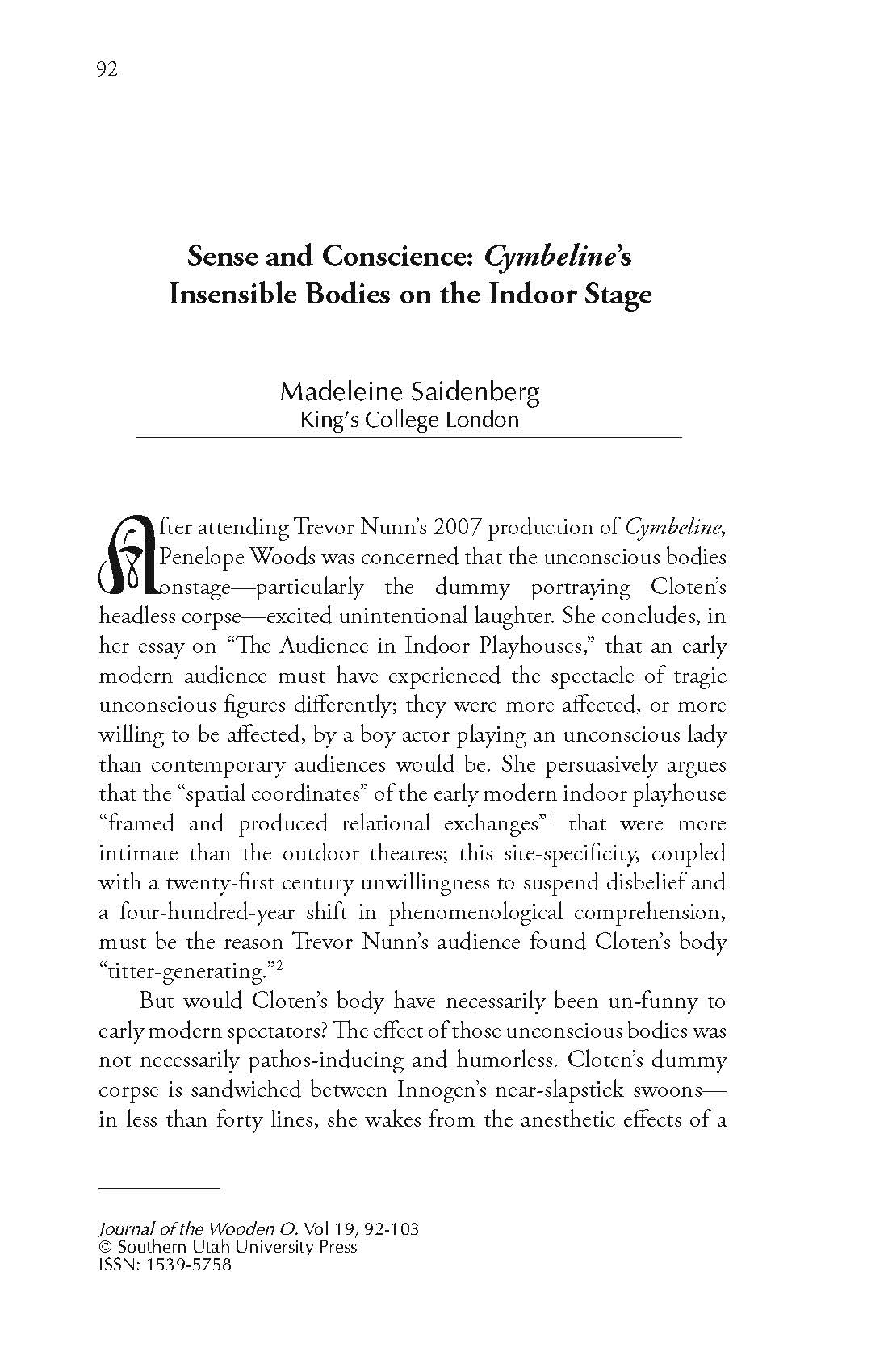Sense and Conscience: Cymbeline’s Insensible Bodies on the Indoor Stage
Main Article Content
Abstract
After attending Trevor Nunn’s 2007 production of Cymbeline, Penelope Woods was concerned that the unconscious bodies
onstage—particularly the dummy portraying Cloten’s headless corpse—excited unintentional laughter. She concludes, in her essay on “The Audience in Indoor Playhouses,” that an early modern audience must have experienced the spectacle of tragic unconscious figures differently; they were more affected, or more willing to be affected, by a boy actor playing an unconscious lady than contemporary audiences would be. She persuasively argues that the “spatial coordinates” of the early modern indoor playhouse “framed and produced relational exchanges”1 that were more intimate than the outdoor theatres; this site-specificity, coupled with a twenty-first century unwillingness to suspend disbelief and a four-hundred-year shift in phenomenological comprehension, must be the reason Trevor Nunn’s audience found Cloten’s body “titter-generating.”2
